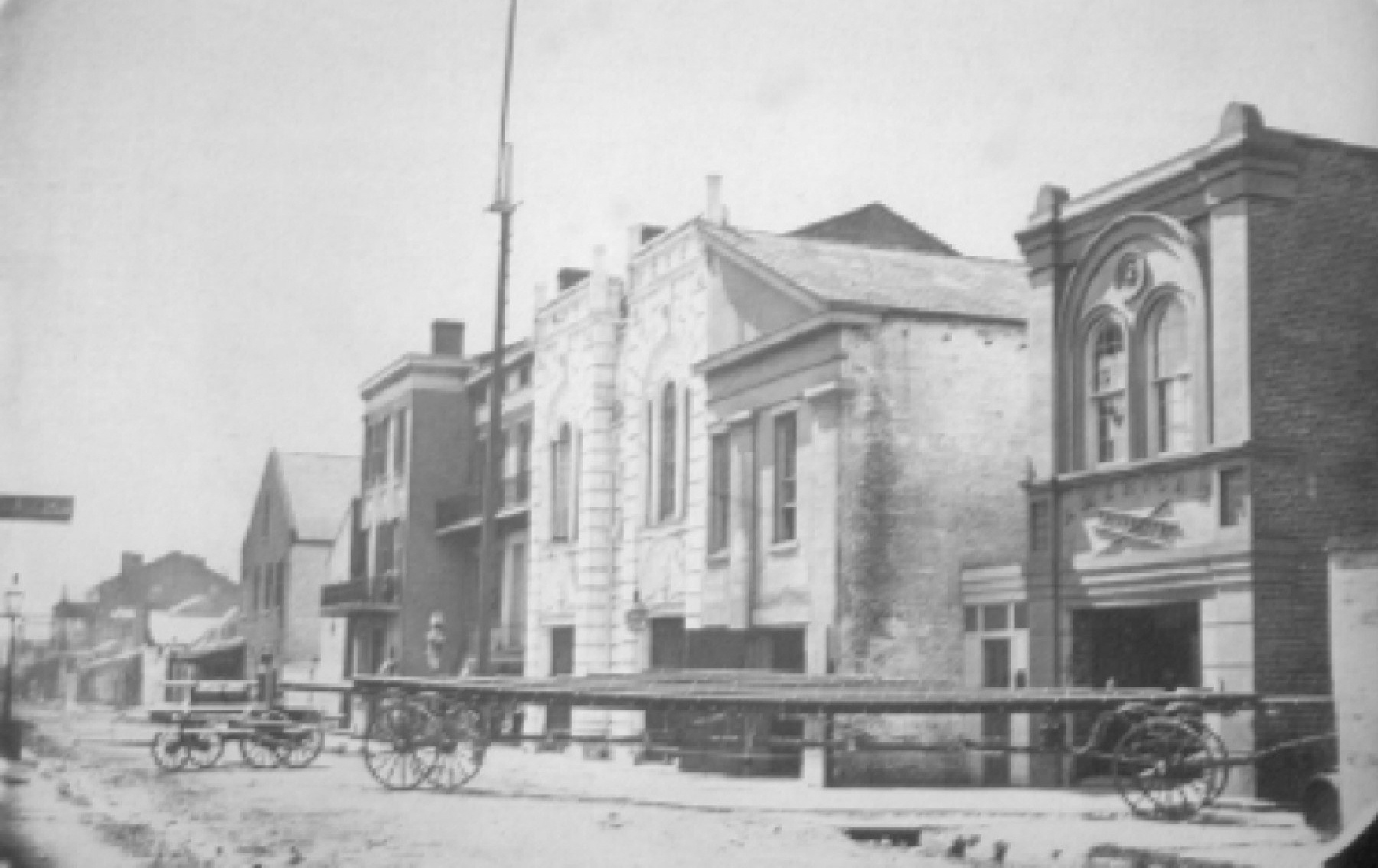Some images for our discussion of Reconstruction. What happened in New Orleans wasn't just interesting, it mattered for the rest of the nation. If you want a short version of Reconstruction in Louisiana, I understand that some really smart guy
wrote the entry for KnowLa, the online encyclopedia of Louisiana.
 |
Gustave Fortier, son of Michel Fortier, who dies the same day the Yankees come.
His daughter would not inherit what was left of his estate until 1898. |
 |
| The image I used on my book jacket. It shows a fireman's parade in 1872. Parades and firemen both played a very different role in the 19th century. Firemen were all volunteer - a professional fire department was a turn of the century invention. You belonged to a volunteer fire company in the same way that you might belong to a club, and all men of even modest standing belonged to SOME form of club in the 19th century. Clubs were social, but they were also political. Above all, if you had a club that was worth anything, it would have an annual parade. Parades were much more common before the emergence of the automobile, but were also an important dimension of the American political experience since the time of the American Revolution. Banners, torches (at night), and yes, marching bands, were essential for a good parade. It was a way of getting your message out to the people. |
 |
| H.C. Warmoth, who becomes governor at age 26 in 1868. |
 |
| P.B.S. Pinchback will become the first "black" governor of Louisiana - for 33 days in 1872-3. |
 |
The Mechanics' Institute - Scene of the Riot of 1866 - now roughly where the University Place entrance of the Roosevelt is located.
Below you see an illustration for the famous 1873 parade of the Mistick Krewe of Comus. This image portrays Benjamin Butler. The Krewe parodied a variety of reconstruction era figures in its controversial procession. What does this say about politics, social display, and parades? Know that the title, "missing links" was a play on Darwin. |
 |
| The U.S. Custom House (now bug museum) as it appears today on Canal Street |
 |
| The Custom House as it appeared roughly at the time of the Civil War |
 |
| Eagle Hall - Built during the war - HQ of the Crescent City Democratic Club. Meeting Halls were important in the 19th century urban landscape |
 |
| The Washington Artillery Hall (center). Notice fire station on right. Located on Girod Street (no longer in existence) |
|
|
 |
| The levee much like it would have appeared in 1874 - though this picture is from around 1885-1890 |
 |
| The tomb of Frederick Nash Ogden |












No comments:
Post a Comment